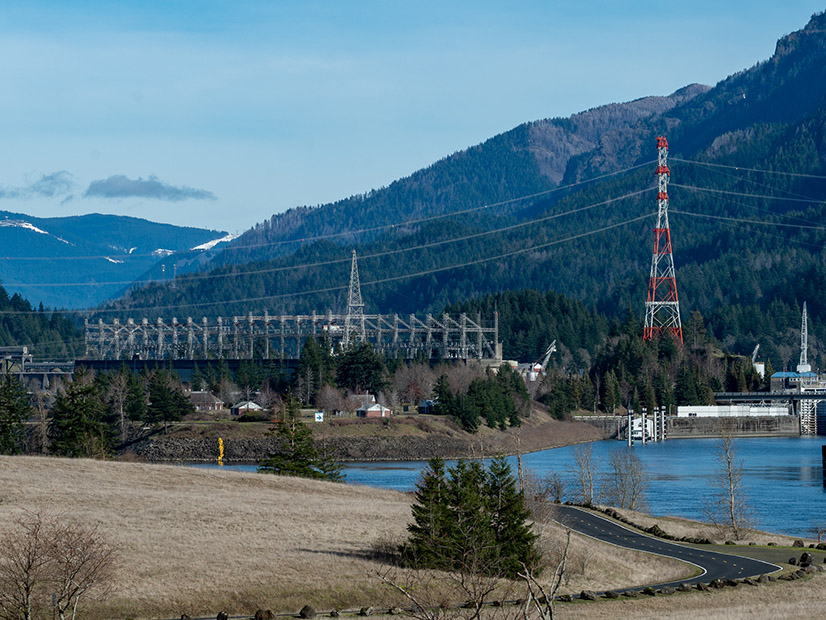
The Bonneville Power Administration has temporarily paused certain transmission planning processes to consider new “reforms” in light of “exponential growth” of transmission service requests, BPA staff told stakeholders during a workshop Feb. 11.
BPA’s 2025 transmission cluster study includes over 65 GW of transmission service requests (TSRs), compared with 5.9 GW in the 2021 study. The requests exceed the total regional load projected for the Pacific Northwest in 2034, Richard Shaheen, BPA’s senior vice president of transmission services, said during the workshop.
“There’s been just an exponential growth in the area of transmission service requests,” Shaheen said.
“That level of demand has basically strained our existing processes that weren’t designed to handle that level of volume, so they literally just crippled under the weight of all of that amount of requests for study,” Shaheen added.
BPA first announced the pause in a Feb. 5 email. Specifically, the areas impacted by the pause include the:
-
- 2025 TSR study and expansion process cluster study;
- TSR evaluation process (for any new TSRs requesting new or modified capacity);
- TSR data exhibit evaluation process;
- Network Integration Transmission Service load and resource forecast evaluation and closeout process.
TSRs requiring network capacity above existing commitments that submitted requests on or after noon Aug. 15, 2024 — the deadline to submit TSRs for consideration in the 2025 cluster study — will see limited impact as BPA assesses the need for planning reforms, according to a staff presentation.
The pause won’t impact initiatives deemed critical, like BPA’s “evolving grid projects,” the Portland area reinforcement study, system assessment and other projects, according to Jeffrey Cook, BPA vice president of transmission asset management and planning.
“This is really just focused on the transmission service request piece that we have in the study,” Cook said. He added that “we have to do something different in order to take the next step forward” to deal with the 65 GW of TSRs.
Abbey Nulph, BPA analyst, reiterated that point, saying the pause is a chance for the agency “to not just live with our existing processes and try to find some way to help them limp along through this process, but to take a big step back [to] be able to design the process with the current world and market activity in mind.”
When BPA designed the studies, the industry had yet to experience the impact of data center growth or current levels of competitive resource development, Nulph said.
A December report published by WECC forecast “staggering” growth in electricity demand in the Western Interconnection over the next decade.
WECC predicted annual demand in the Western Interconnection will grow from 942 TWh in 2025 to 1,134 TWh in 2034. That 20.4% increase is more than four times the 4.5% growth rate from 2013 to 2022 and double the 9.6% growth forecast in 2022 resource plans.
Similarly, the Pacific Northwest Utilities Conference Committee’s Northwest regional forecast for 2024 found that electricity demand will increase from about 23,700 average MW in 2024 to about 31,100 aMW in 2033, an increase of more than 30% in the next 10 years.
Following stakeholder input, BPA said the plan is to issue a staff proposal in November aimed at improving the processes impacted by the pause.
The pause also comes amid recent actions taken by President Donald Trump aimed at the energy industry at large. Trump recently paused a 10% tariff on “energy resources from Canada,” along with 25% tariffs on other imports from Canada and from Mexico, for 30 days after last-minute negotiations with the two countries’ leaders.
Additionally, Trump, on Feb. 10, imposed a 25% steel tariff on all steel and aluminum imports.
Meanwhile, BPA workers, similar to millions of other federal workers, received the buyout offer from the Trump administration in a message titled “Fork in the Road.” The administration offered a “deferred resignation” arrangement, promising to provide workers who accepted the offer with a severance package consisting of eight months’ pay and benefits through Sept. 30, the end of the federal fiscal year. The offer has been challenged in court.


